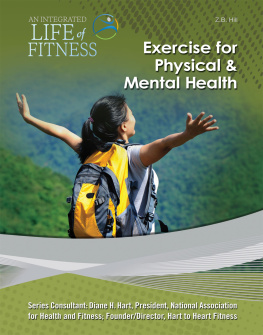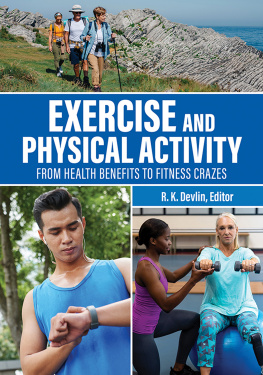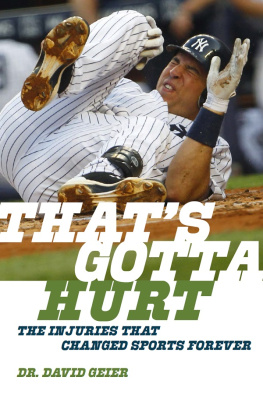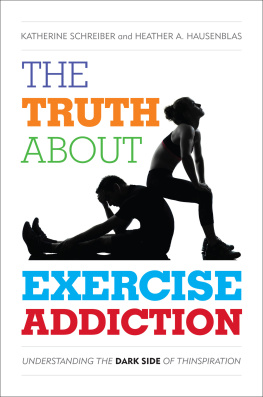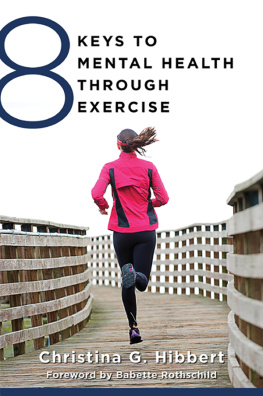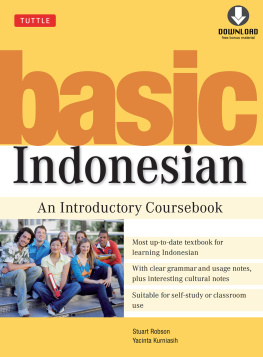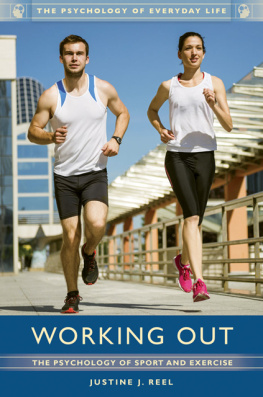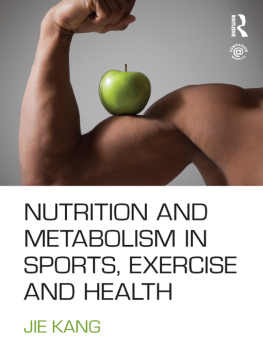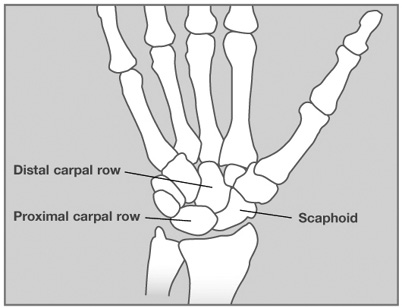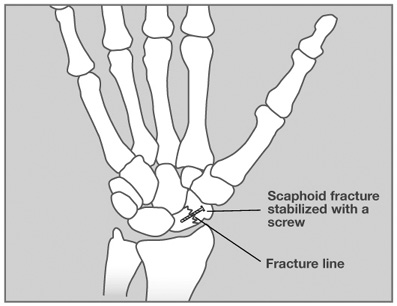EXERCISE WILL HURT YOU
Concussion, Traumatic Brain Injury, and How the Dangers of Sports and Exercise Can Affect Your Health
steven j. barrer, md
Seven Stories Press
New York Oakland
Copyright 2014 by Steven J. Barrer, MD
A Seven Stories Press First Edition
All rights reserved. No part of this book may be reproduced, stored in a retrieval system, or transmitted in any form or by any means, including mechanical, electronic, photocopying, recording, or otherwise, without the prior written permission of the publisher.
Seven Stories Press
140 Watts Street
New York, NY 10013
www.sevenstories.com
College professors and high school and middle school teachers may order free examination copies of Seven Stories Press titles. To order, visit www.sevenstories.com/textbook or send a fax on school letterhead to (212) 226-1411.
Library of Congress Cataloging-in-Publication Data
Barrer, Steven J.
Exercise will hurt you : concussion, traumatic brain injury, and how the dangers of sports and exercise can affect your health / Steven J. Barrer, M.D.
pages cm
ISBN 978-1-60980-535-7 (hardback)
1. Sports injuries. 2. Exercise--Health aspects. 3. Sports--Health aspects. 4. Medical misconceptions. I. Title.
RD97.B36 2014
617.1027--dc23
2014010249
Printed in the United States
9 8 7 6 5 4 3 2 1
For my children:
Hilary
Your courage inspires me,
Andrew
Dreams do come true,
Elisabeth
They cannot take you out of my mind or my heart.
I love you and miss you.
And for my wife Pam, who made all this possible,
and worth it.
Contents
Chapter 1 | The Cult of Exercise and
the Mechanics of Injury
Chapter 2 |
Chapter 3 |
Chapter 4 |
Chapter 5 |
Chapter 6 |
Introduction
I have never done anything athletic where I havent hurt myself. Some of the injuries have been minor, others not so insignificant. Allow me to explain with a few examples.
Some years ago, while bicycling in a group, I broke my wristno minor injury for a surgeon. And I didnt even fall. My attention wandered for a moment and I rode onto the shoulder. The road surface was asphalt with a square-edged side that created a drop-off to the roadside that served as a culvert. It put me on a direct collision course with a drainage pipe that ran under a driveway just a few yards ahead of me. If I had collided with the pipe, my tire would have wedged into it, the bike would have come to an instantaneous halt, and I would have been catapulted over the handlebars.
In that surreal moment, just before disaster strikes and you know its coming, time slows: I had a vivid picture of what was about to happen. The types of possible injuries flashed through my mind. It wasnt a question of whether or not there would be a crash. It was only a matter of how severe it would be.
In desperation, fueled by panic, I attempted to correct my course. With only a few microseconds to make a decision, I turned the bike back into the road edge, figuring it would cause me to fall. But sliding along the road surface still in contact with the bike would be preferable to being launched through the air.
It appeared at first to have succeeded. My front wheel struck the elevated road edge, causing the front tire to pop up in the air and land back on the road surface, and the rear tire followed. I was actually back on the road, still upright and even headed in the right direction. No one riding with me seemed to have even noticed.
The impact, however, caused a jarring that rippled up the bikes forward fork to the handlebars and fractured the scaphoid bone of my left wrist. At the time, I thought it was at worst a sprain. I didnt pay too much attention to the pain that at first was only mild. Mostly, I was overwhelmingly relieved that I would not require the local emergency medical services. I was also oddly proud of myself for having avoided what only seconds previously had loomed as a catastrophe. I finished the ride with my friends, loaded my bike back onto its carrier and drove home.
By that evening my wrist had become increasingly painful and swollen. I went to my hospital and had it x-rayed. I read the film myself and saw what looked like a fracture, but in my practice I rarely need to look at x-rays of the extremities. I had one of my emergency room colleagues look at it and he confirmed the break.
The scaphoid bone is one of eight that make up the wrist. It has a worrisome incidence of non-union, a situation where the bone does not heal, causing chronic pain, and in someone who works with his hands, disability.
I consulted with my friend and hand surgeon, Bob Takei (yes, cousin of George Takei, Hikaru Sulu on Star Trek), who gave me two options: I could wear a cast for twelve weeks, and if it didnt heal, undergo surgery to place a screw across the fracture, or go directly to the screw, in which case Id be out of work for only four weeks
Illustration of screw in scaphoid bone.
.
The next day I had the surgery and was back in the operating room in two and a half weeks. Bob wasnt happy with my timeline but was pleased that it healed so well. Doctors make the worst patients, with the possible exception of nurses.
Why do I dwell on this injury? Because it, along with the rest of my personal history and more than thirty years of practicing medicine, has convinced me that, almost no matter what you do, exercise will hurt you.
Maybe I just have bad luck. My family tells me Im injury-prone, though I suspect thats just a euphemism for people who do things that put them in harms way. But a few years before the bike accident, while playing third base for the hospital softball team, I reached down for a ground ball and heard a disturbing ripping sound from my calf. There was immediate pain and, shortly thereafter, discoloration above and behind my ankle indicating bleeding. I had torn my plantaris muscle, a small muscle that makes up part of the calf. I was on the disabled list for a month. Crutches, then a cane, and humiliation were my lot. I was injured playing soft ball.
Then there was my try at Aikido.
My cousin David Goldberg is a third-degree black belt of Aikido (and a master samurai swordsmith), and the sensei of his own dojo near my home. Aikido is a martial art in which you use your opponents momentum against him: by redirecting your assailants offensive action, you turn his move into an offensive action against himself. It is as much a philosophy of life as it is a form of combat. David suggested I come work out with him for the exercise. So I bought a ghee, looked very martial, and started down the path of health and self-defense. It didnt last a month. While doing a roll on the matstheres lots of mat time in AikidoI rolled onto my side with my arm tucked under me. The pressure of my ribs against the mat, with my elbow in between, cracked a riband another disturbing sound. Immediate pain, difficulty inhaling deeply, and another athletic endeavor terminated. Rib fractures hurt, a lot, and take months to heal completely. If you ever have one, try not to cough.
What else? There was the mild concussion playing neighborhood basketball, another torn calf muscle skiing in Colorado with a group of doctor friends from my hospital. Thank goodness for Paul Angotti, a podiatric surgeon who taped me up and at least got me ambulatory, if not exactly skiing. There was the day I played golf with my neighbor Bob Freedman. I was foolishly standing about twenty yards ahead of Bob, a very good golfer, but far enough to the side to feel safe. Not so. Bob hit the ball off the heel of the club, and it tracked directly at me like a heat-seeking missile. I tried to jump out of the way but was too close to have enough time to reach safety. The ball hit squarely on my shin. The pain was intense, as the thud that sounded like a cleaning wand whacking a carpet on a clothesline resounded in my ears. Bodily injuries make an amazingly diverse number of sounds. No broken bones this time, but a hematoma that went way beyond goose egg. The ball, of course, instead of ending up deep in the wooded rough where I was standing, careened back into the fairway, about a hundred yards ahead. After expressing his concern, Bob thanked me for the ricochet. Injured! While playing golf!


